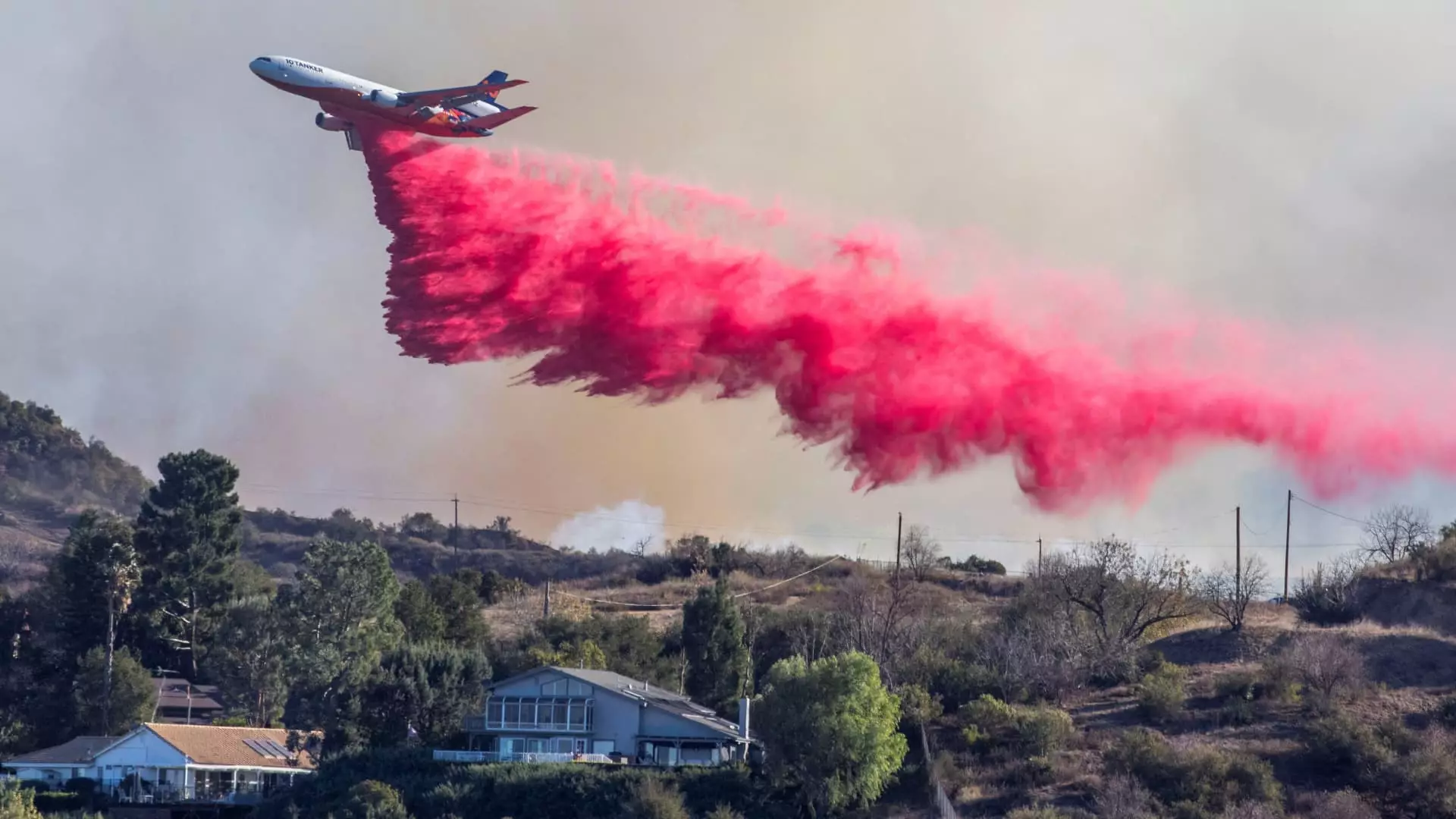In recent years, wildfires in California have transformed from seasonal occurrences into catastrophic events threatening entire communities. The raging flames, often fueled by extreme weather events, have pushed firefighting resources to their limits. Companies specializing in aerial firefighting, which were once prepared for the typical wildfire season spanning from April to November, have found themselves working amidst unexpected flames, creating new questions around preparedness and resource allocation. This shift towards an era of perpetual wildfire threats challenges not only the air tankers tasked with combatting these blazes but also the infrastructure supporting their operations.
The state of California, home to the largest fleet of civil firefighting aircraft in the United States, leans heavily on both public and private resources. While Cal Fire manages over 60 aircraft, private companies like 10 Tanker Air Carrier and Bridger Aerospace are becoming increasingly vital as the frequency and intensity of wildfires escalate. Joel Kerley, CEO of 10 Tanker, emphasizes the swiftness required in responding to fires. “I was fortunate to have two aircraft available,” he states, underscoring the unpredictability of fire outbreaks throughout the year.
Aerial firefighting serves as a critical support system, alongside ground crews battling flames. Aircraft such as VLATs (Very Large Air Tankers) and water scoopers are involved in dropping millions of gallons of fire retardant and water onto active blazes, yet the amount of airtime and the effectiveness of these units can vary significantly based on environmental factors—placing a heavier emphasis on strategic deployment and timely response.
Recent events have exposed a stark reality: the burgeoning demand for firefighting aircraft far outweighs the supply. As wildfires seem to burn more intensely and for longer periods, it becomes clear that a reassessment of aerial resources is urgent. Kerley voices a critical concern, noting, “There’s not enough air tankers to go around.” With the growing incidence of devastating wildfires, both public agencies and private companies must come together to innovate and expand their fleets or capabilities.
A distressing aspect of this situation is the lag in aircraft conversion and maintenance. For instance, companies often face the challenge of keeping some aircraft grounded during essential seasonal maintenance—a situation that could be exacerbated by unpredicted fire outbreaks. Bridger Aerospace faced a similar scramble as its aircraft underwent winter maintenance while the fires erupted.
More countries experiencing severe wildfires, like Australia, have begun to invest in their own firefighting capabilities, recognizing the shared global challenge of wildfires exacerbated by climate change. The collaboration between nations and businesses in developing robust firefighting strategies is critical to managing these threats. As fire seasons become longer and more intensive, the uniformity of response and readiness must evolve to meet new demands.
As seen with firms like 10 Tanker and Bridger, the emphasis on innovative aircraft design and technology—akin to a new generation of aerial firefighting units—is crucial. These companies face hurdles not just in increasing the size of their fleets but also in ensuring that the pilots and mechanics can keep pace. Efficient and agile transformations of existing aircraft into firefighting units are essential to meeting operational needs in a crisis.
To effectively respond to an evolving wildfire landscape, it will be essential for firefighting companies to remain agile and adaptable. A multi-faceted approach that includes upgrading existing aircraft models and procuring new technology can serve as a game changer. Companies like De Havilland, producing water scooping aircraft, are developing new models expected to provide enhanced performance amidst challenging conditions, including extreme temperatures and hazardous environments.
While the impending threat of wildfires looms larger due to climate change, the role of aerial firefighting becomes increasingly vital. As community resources become strained, the reliance on air support must be balanced against the need for preventative strategies and systematic risk management. Strengthening partnerships between governments and private companies will be crucial as we navigate a future where wildfires may become an enduring challenge.
As California and other regions brace for the inevitable challenges posed by wildfires, stakeholders in the firefighting community must adopt a proactive and collaborative approach to ensure that human lives and property are protected against the growing threat of these devastating fires. It’s a daunting road ahead, but collective resilience and innovation could light the way.


Leave a Reply